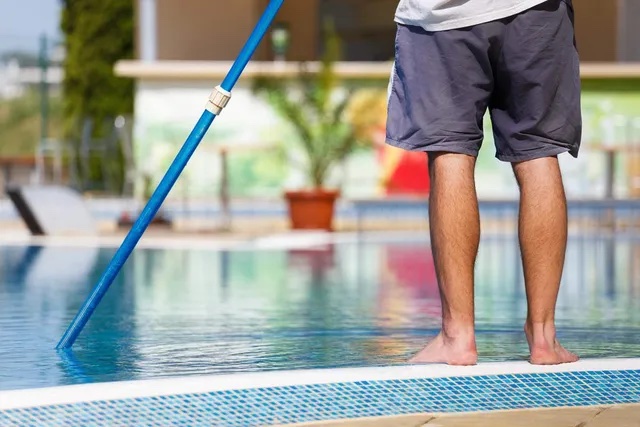
Keeping Your Backyard Pool Clean and Cool
Backyard pools make the hot summers a little more bearable. They add value to the home, can be calming, convenient and fun! Keeping up with the maintenance is a must during the summer months when bacteria is more likely to grow and chemicals break down much quicker than in cooler months. Below are some tips on keeping your pool clean and cool as the days get hotter and hotter.

1. SKIM AND VACUUM THE POOL
Keeping your pool clean is a daily job, but worth it. You will want to make sure the debris that falls in the pool from trees, bushes and whatever the wind carries is removed as often as possible. This can be done easily with a skimming net, and will keep your pool ready for eager swimmers. If the debris has fallen to the bottom of the pool, a good pool vacuum will be able to pick this up. Be sure to check the filter and container if it isn't picking up as well as you'd like. It's might need to be emptied or cleaned.

2. CLEAN POOL FILTERS
Your pool filter comes in one of three different types: cartridges, sand or diatomaceous earth (DE). Maintenance will vary depending on which type you have, but each one requires periodic cleaning. If your filter isn’t cleaned regularly, it won’t trap the debris -- and that means your pool water may start to look discolored or murky. The flow of your water will also change, signaled by the increase in the pressure gauge and flow meter. To clean the filter you must:
- Turn the valve to backwash
- For a DE filter: empty the filter bag every other week
- For the cartridge: remove and hose down
- For the sand filter (not often used anymore): consider replacing with the other two filters because it filters water down into your waste system and depends on a storm drain

3. MAINTAIN pH LEVELS
PH levels need to be maintained for several reasons. The main reason, of course, is safety. If the pH level is too high, the acidity in the pool may be dangerous. Be sure to keep your pH levels between 7.2 & 7.8. You should have a testing kit on hand with test strips to measure the water. If the water is below or above the safe range for swimming water, you will need to add chemicals in to fix it. To increase the range to 7.2, you’ll need to use soda ash. To decrease the levels, you’ll need to use muriatic ash. If you don’t have these chemicals on-hand, you might call a professional pool service in your area to do the work for you. They have the experience working with such chemicals. Consider using a smartphone app to maintain your pool’s chemicals and pH levels.
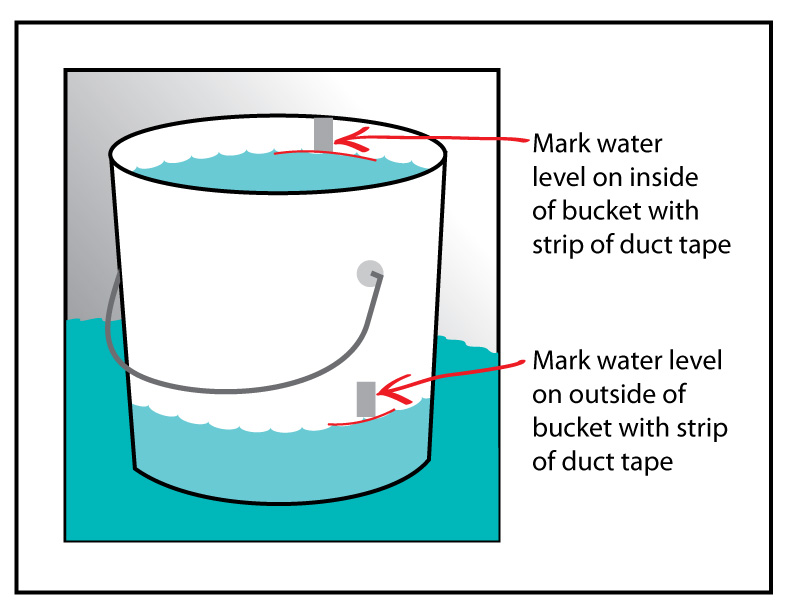
4. FIND AND REPAIR LEAKS
You should always check for leaks and other problems with your pool at the beginning of summer before anyone jumps in. It could be hard to find some of the leaks if your water just seems low at the beginning of the season. The best way to check is to do a bucket test. You fill a bucket ¾ of the way full and mark the water line. Once you put it in the pool, mark the line outside the bucket and let it float for a couple of days. If the water goes down the same amount, it’s evaporation. If the water goes down more on the outside, there is a leak and you need to call a pro. In such cases, you could be looking at pool repair costs between $250 and $500, depending on the extent of the problem.
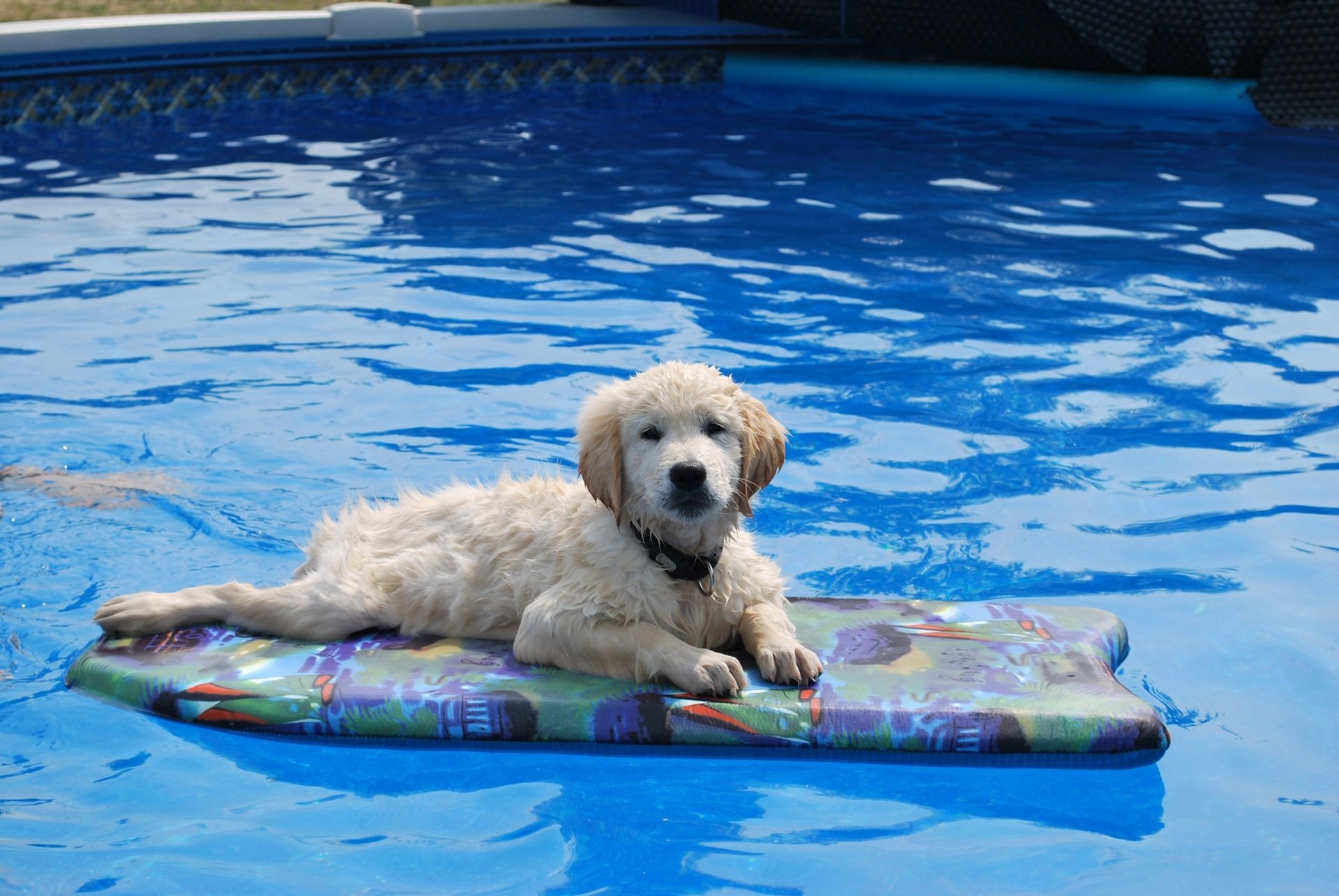
KEEPING YOUR POOL COOL DURING THE SUMMER
Swimming pools are a cool and refreshing way to beat the heat during the sweltering dog days of summer. There is nothing better on a hot day than jumping into the cool and rejuvenating water of your backyard pool.
So what can you do if your pool water has passed the point of ‘refreshing’ and now just feels like warm chlorinated bathwater? Don’t despair — we’re going to share the best options out there for how to cool your pool in no time so you can actually enjoy your pool all summer long.
1. INVEST IN A MECHANICAL EVAPORATIVE CHILLER
An evaporative pool chiller (or pool cooler) is a powerful way to cool off your pool in a hurry. It’s basically like an air conditioning unit for your pool that works by using fans to cool the water as it travels through the system. These are most effective when used at night to take advantage of the cooler temperatures.
Not only can a pool cooler decrease your pool water temperature by 10 degrees Fahrenheit (or more), they actually can help you save on pool chemical usage as well. As you probably know, warmer water burns through sanitizer at a much higher rate than cool water and can also be a breeding ground for bacteria.
With a pool full of nice cool water, your consumption of pool chemicals can easily take a plunge, making your pool less costly and easier to maintain all around.
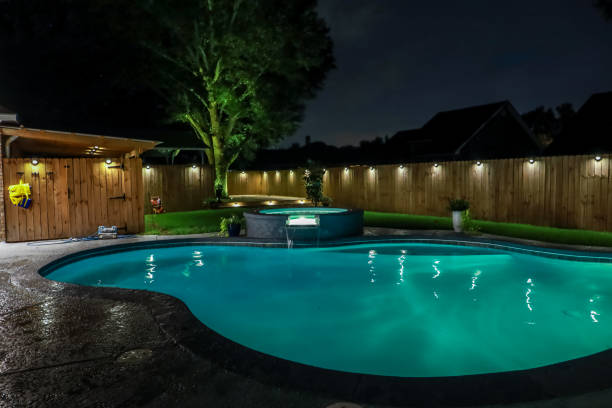
2. RUN YOUR POOL FILTER AT NIGHT
budget-friendly option for cooling your pool is the simple and practical step of just running your pool filter at night, rather than during the day. At night the air is cooler and will actually work as an imitation evaporative cooling system, dropping your pool water temperature by a few degrees or so.
This method is a good rule of thumb, especially for pool owners that live in hot climates, however, it won’t produce the kinds of significant drops in water temperature that you’d see with a pool cooler.
Since the evaporative cooling process is going to be subtle and somewhat dependent on the air temperature at night where you live, this is not a foolproof plan, but keeping the water moving in your pool is a great way to take the edge of the summer heat.
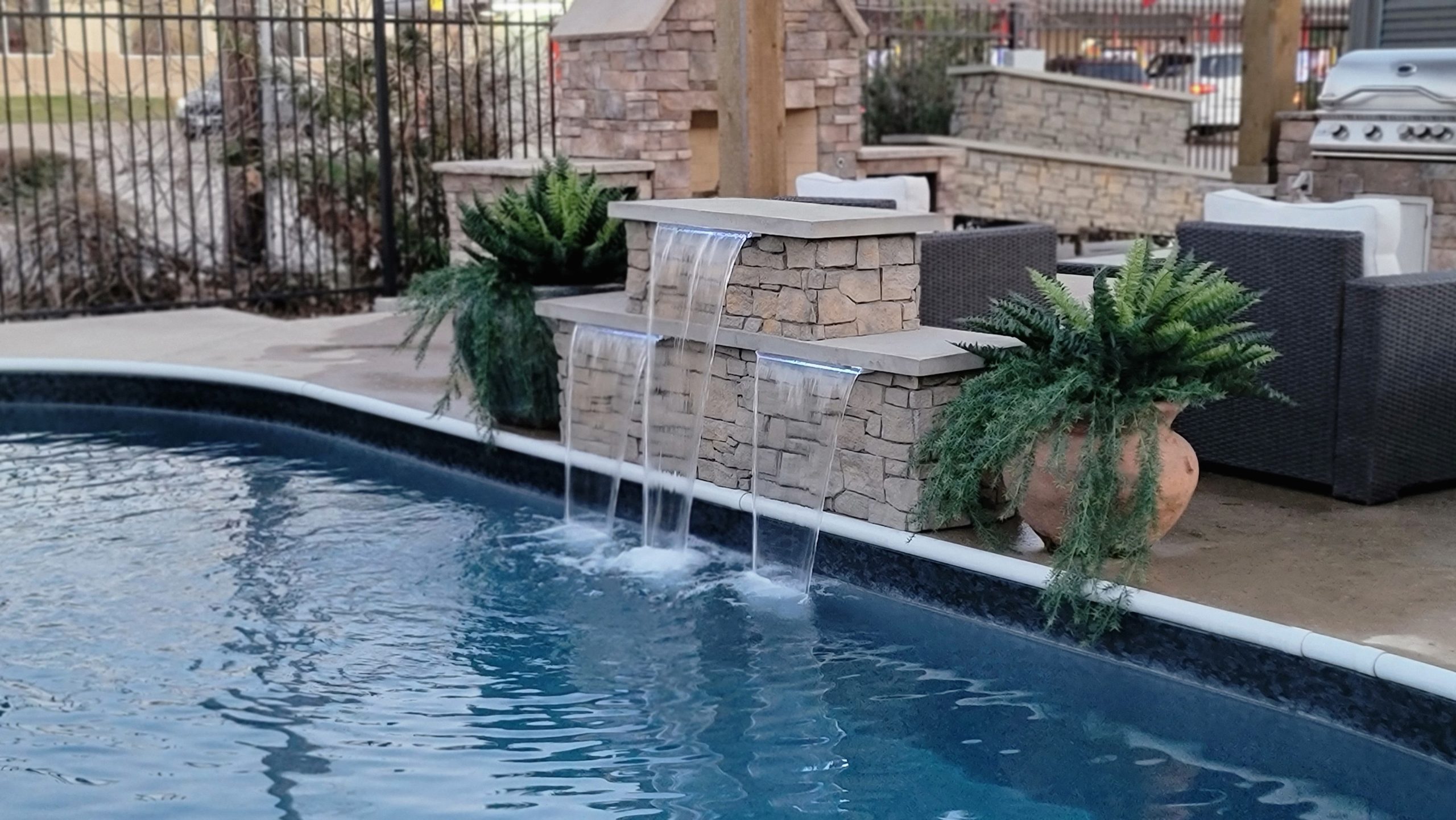
3. ADD A WATER FEATURE
One of the best and most aesthetically pleasing ways to cool off your pool water this summer is to add a water feature to your pool area. This could come in the form of a fountain, a waterfall, or an aerator. Not only are these pretty to look at and relaxing to listen to, but they also have the added bonus of dropping the temperature of your pool water.
These water features work to cool your pool by evaporation as well, removing a small portion of water that travels through the feature to lower the temperature of the pool as a whole. It’s true that you’ll lose a bit more water to this process than you would naturally to evaporation, but it is an effective and budget-friendly option that gets the job done.
Make sure to take advantage of the cooler temperatures after sunset, running your new water feature all night to get the most out of this pool cooling technique.
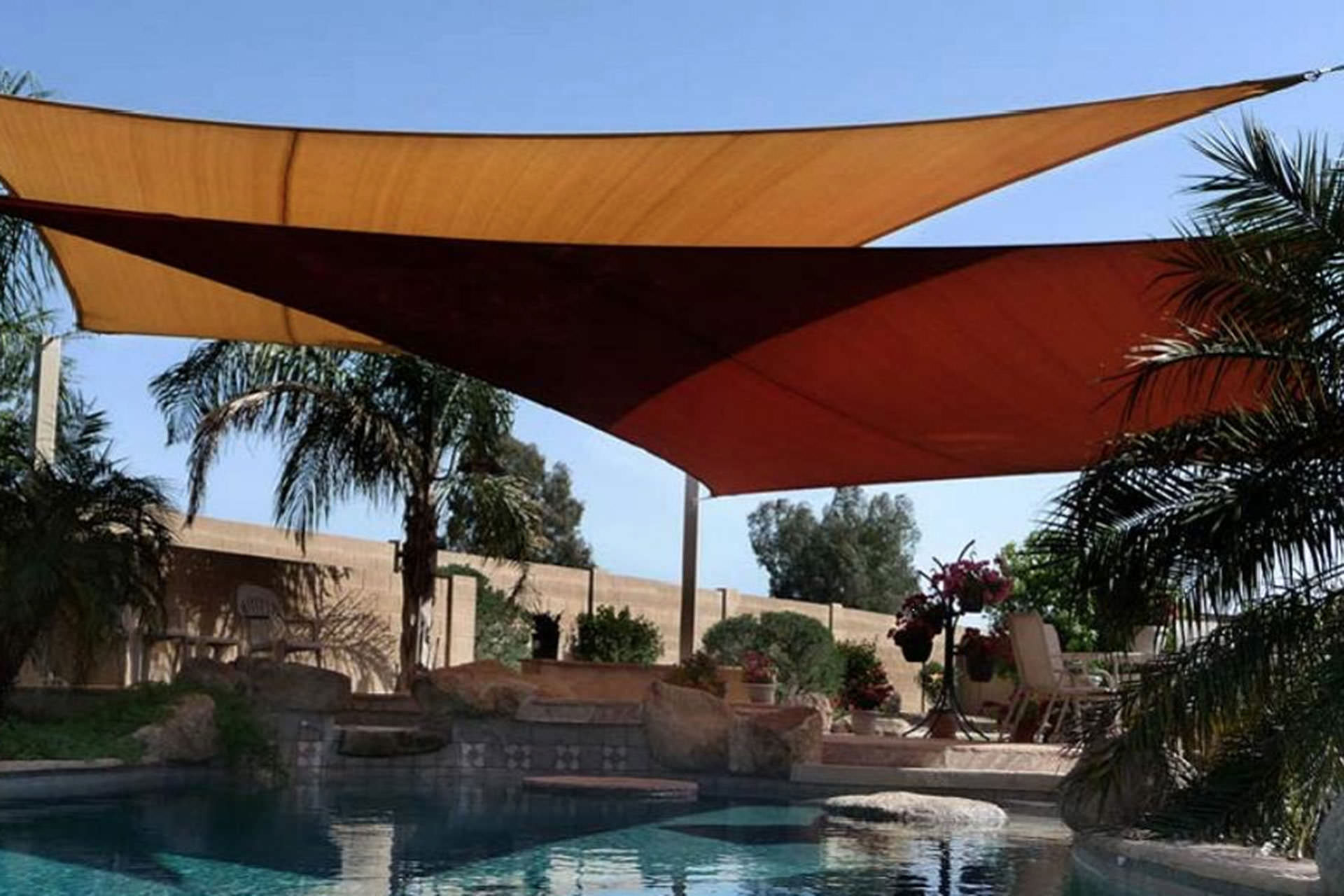
4. SHADE YOUR POOL AREA
Keeping your pool out of direct sunlight is a great option for keeping the water temperature low. It also has the added benefit of decreasing chlorine loss by UV exposure and saving you money on pool chemicals.
An easy way to shade an exposed pool area is to install an awning over at least part of your pool to shade it from the strongest afternoon rays that heat up your pool water the most. Not only will your pool stay cool, but you will too! A poolside awning will keep everyone in the backyard cool at your next pool party or barbecue.

5. DRAIN AND REFILL YOUR POOL
If the temperature has gotten way too high or if you’re due for a water change, starting from scratch with cooler and more refreshing pool water might be just the thing. Draining your pool is an expensive option (and wasteful too) but it might be necessary, depending on how hot your pool water is.
We don’t recommend this option, outside of the most extreme cases, as it is only a short term solution to a season-long challenge. Without a secondary cooling solution, your newly refilled pool is just going to heat up again… not to mention all of the new chemicals you’ll have to throw in to re-balance and sanitize the new water.
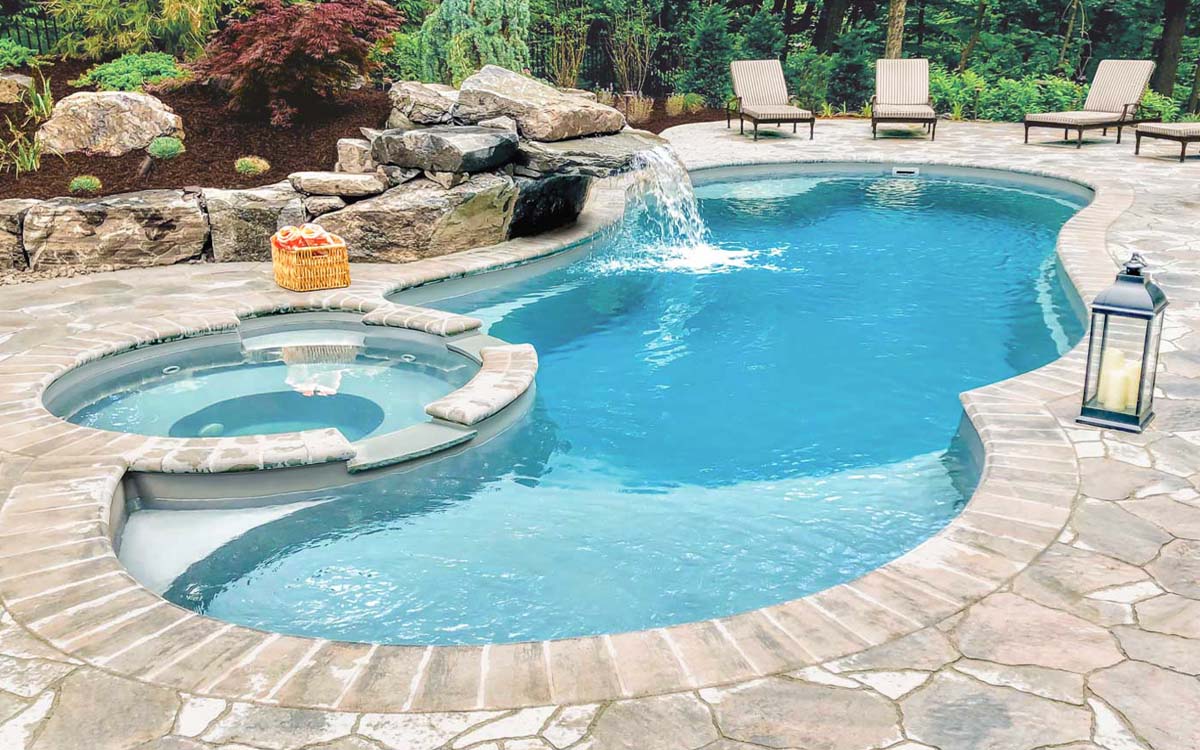
6. CONSIDER A REVERSIBLE HEAT PUMP
Reversible heat pumps are pool heaters that can instantly transform into pool air conditioners with the use of refrigerant and handy temperature controls.
Installing one of these bad boys for your pool is going to be the easiest option, literally cooling your pool on-demand with the flip of a switch. They are, however, a fairly expensive proposition, especially when you consider the initial price and long-term operating costs.
If you’re looking for a pool appliance that can do double-duty: heating your pool in the winter and cooling it in the summer, a reversible heat pump may be just what the doctor ordered. Not only will you be more comfortable while using the pool, you’ll be able to extend your pool season far longer and truly get the most out of your investment.
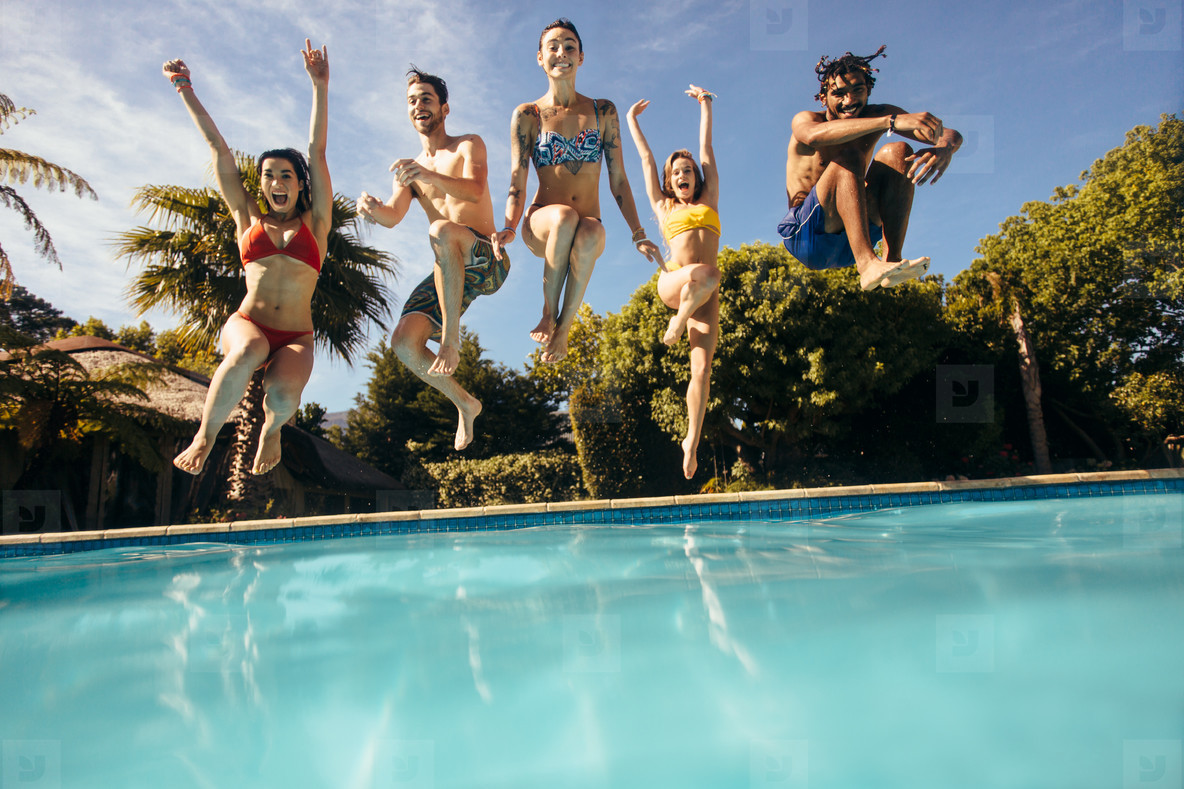
Stay Cool This Summer!
Trying even one of these helpful tips will go a long way to cooling off your pool water this summer, making your backyard swimming pool a true oasis in the heat, rather than a steamy hot tub you’d sooner avoid.
Keeping your pool water nice and cool not only will make swimming more enjoyable, but it will also actually protect your pool water from algae and bacteria growth while saving you money on pool chemicals.

